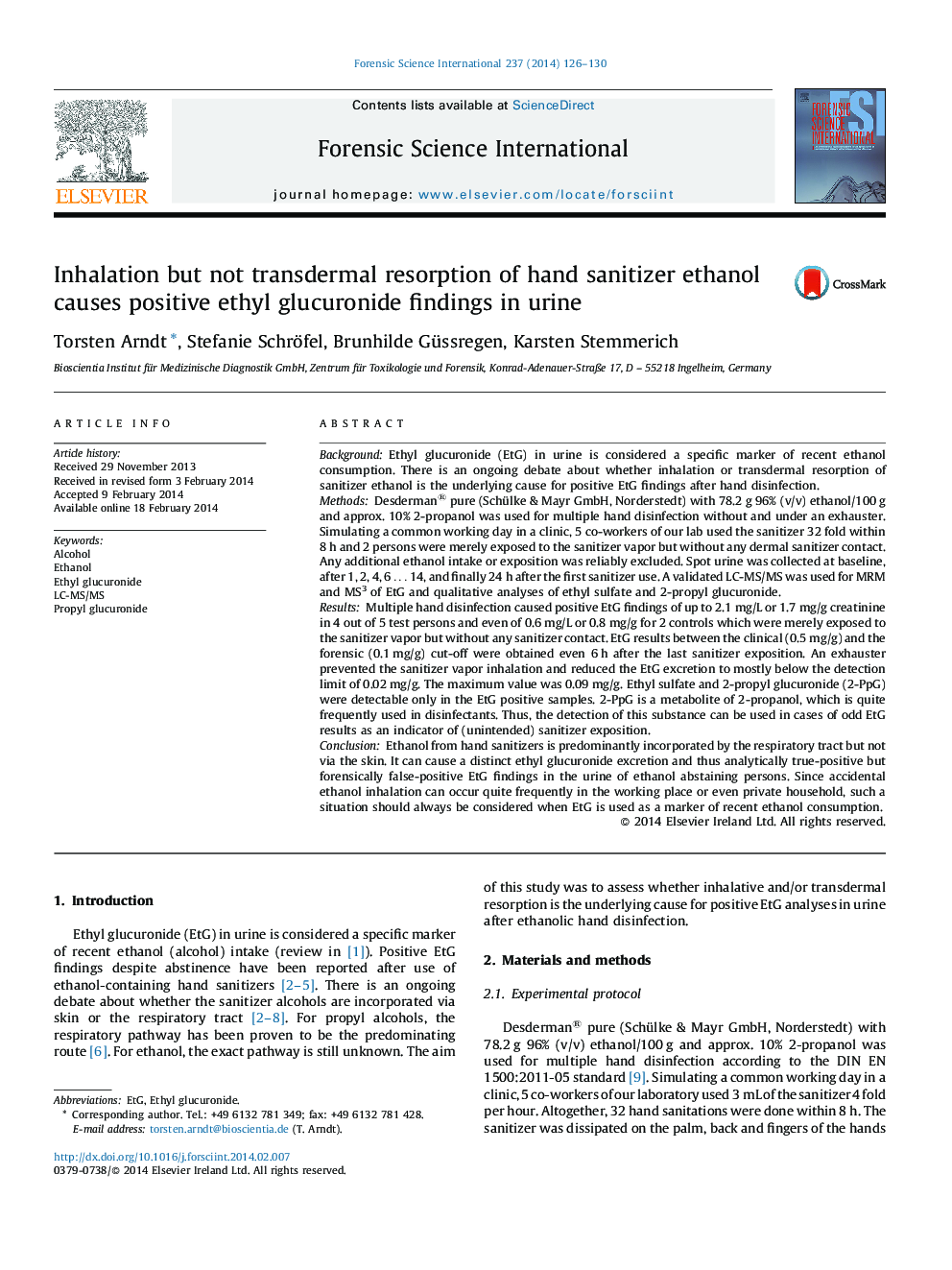| Article ID | Journal | Published Year | Pages | File Type |
|---|---|---|---|---|
| 95791 | Forensic Science International | 2014 | 5 Pages |
BackgroundEthyl glucuronide (EtG) in urine is considered a specific marker of recent ethanol consumption. There is an ongoing debate about whether inhalation or transdermal resorption of sanitizer ethanol is the underlying cause for positive EtG findings after hand disinfection.MethodsDesderman® pure (Schülke & Mayr GmbH, Norderstedt) with 78.2 g 96% (v/v) ethanol/100 g and approx. 10% 2-propanol was used for multiple hand disinfection without and under an exhauster. Simulating a common working day in a clinic, 5 co-workers of our lab used the sanitizer 32 fold within 8 h and 2 persons were merely exposed to the sanitizer vapor but without any dermal sanitizer contact. Any additional ethanol intake or exposition was reliably excluded. Spot urine was collected at baseline, after 1, 2, 4, 6 … 14, and finally 24 h after the first sanitizer use. A validated LC-MS/MS was used for MRM and MS3 of EtG and qualitative analyses of ethyl sulfate and 2-propyl glucuronide.ResultsMultiple hand disinfection caused positive EtG findings of up to 2.1 mg/L or 1.7 mg/g creatinine in 4 out of 5 test persons and even of 0.6 mg/L or 0.8 mg/g for 2 controls which were merely exposed to the sanitizer vapor but without any sanitizer contact. EtG results between the clinical (0.5 mg/g) and the forensic (0.1 mg/g) cut-off were obtained even 6 h after the last sanitizer exposition. An exhauster prevented the sanitizer vapor inhalation and reduced the EtG excretion to mostly below the detection limit of 0.02 mg/g. The maximum value was 0.09 mg/g. Ethyl sulfate and 2-propyl glucuronide (2-PpG) were detectable only in the EtG positive samples. 2-PpG is a metabolite of 2-propanol, which is quite frequently used in disinfectants. Thus, the detection of this substance can be used in cases of odd EtG results as an indicator of (unintended) sanitizer exposition.ConclusionEthanol from hand sanitizers is predominantly incorporated by the respiratory tract but not via the skin. It can cause a distinct ethyl glucuronide excretion and thus analytically true-positive but forensically false-positive EtG findings in the urine of ethanol abstaining persons. Since accidental ethanol inhalation can occur quite frequently in the working place or even private household, such a situation should always be considered when EtG is used as a marker of recent ethanol consumption.
